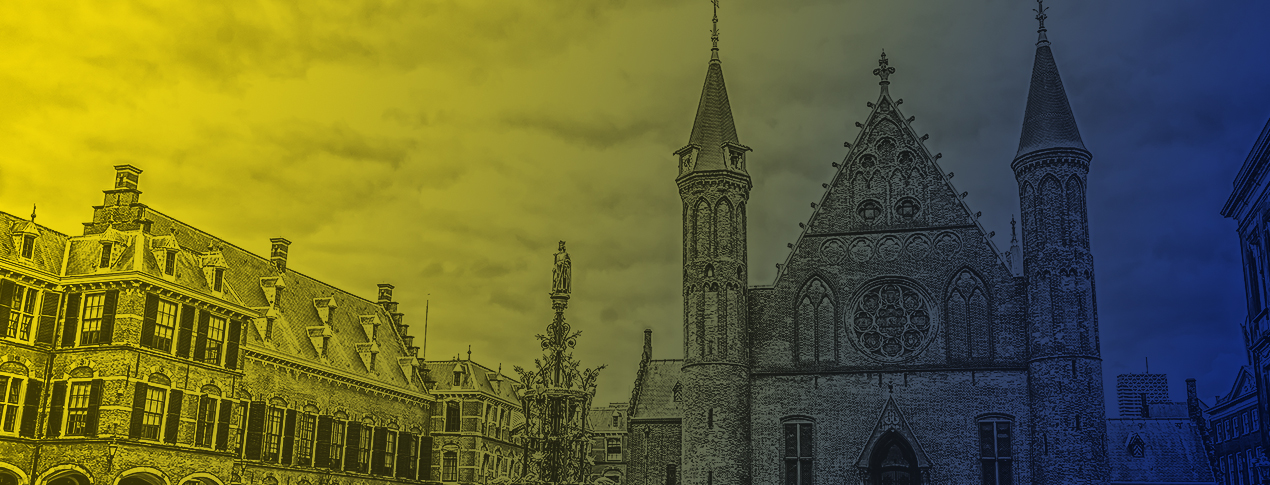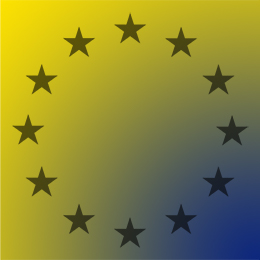The people have spoken; Brexit means Brexit. Oh wait, wrong elections. The Dutch voters have voted for pro-European parties, giving the European ship the first nudge away from a populist uprising and the predicted demise of the European Union. Yes, Wilders’ anti-EU populist party came in a distant second but it did not become the biggest party as many in Brussels had feared. The three most obvious and feasible coalition choices will result in a cabinet that wants to reform the European Union, instead of tearing it down, to create a long-term sustainable Union.
The Dutch election result could very well be a turning point for the EU; 2016 had Brexit, Trump’s win, Renzi’s loss, and a myriad of other crises. Yesterday’s vote could usher in a year of stability though; the Dutch will likely get a pro-European government, the pro-EU Macron could win in France and the Germans are seeing the populist AfD lose support in the polls. Taking a big leap, if all three countries end up with relatively pro-European governments, the EU will have stability at its core. The main wildcard being Italy, where there could be early elections this year that could see populist M5S become the biggest party. Apart from Italy, the first major elections would then be the 2019 Polish election and the 2020 Spanish elections. Of course, there will be many elections in the meantime, but not in the traditional core of EU.
All of a sudden it looks increasingly likely that Theresa May and the UK will face a European Union at the Brexit negotiating table that will have reconfirmed its Union, rather than a continent in disarray with Nexit and Frexit referenda looming.
Formation
Taking a step back to the Netherlands, the Dutch are starting the formation process. A ‘verkenner’ (translates to a ‘scout’, in this case an exploratory politician) has been appointed; incumbent Health Minister Edith Schippers from the conservative liberal VVD will have exploratory talks with all party leaders ahead of the first session of the new Parliament next Thursday 23 March. She will advise the Parliament on appointing one or more ‘informateurs’ (the formal explorer of potential coalitions) that are given a mandate to officially investigate the potential for a certain coalition. The Parliament will likely put time restraints on this phase but it can be anything from days to weeks. The informateur(s) will report to Parliament again and advise if a certain coalition is possible. After which Parliament appoints a ‘formateur’ (the formal leader of formation negotiations) who starts the negotiations between the parties looking to form a coalition, the formateur traditionally becomes the Prime Minister.
There are pretty much three main feasible coalitions (and a myriad of other less feasible options);
- VVD (33), CDA (19), D66 (19) and GL (14) – 85/150 seats in the Lower House and 39/75 seats in the Upper House. This would be a green centre-right coalition with a balance between progressive (D66, GL) and conservative (VVD, CDA) parties.
- VVD (33), CDA (19), D66 (19), CU (5) and SGP (3) – 79/150 seats in the Lower House and 40/75 seats in the Upper House. This would be a centre-right coalition with a more conservative Christian (CDA, CU, SGP) touch.
- VVD (33), CDA (19), D66 (19) and PvdA (9) – 80/150 seats in the Lower House and 43/75 seats in the Upper House. This would be a ‘Grand Coalition’ in the traditional sense with the three traditional centre parties (VVD, CDA and PvdA) combined with a centre-progressive party (D66).
Brexit outlook
The three core parties of the coalition (VVD, CDA, D66) are relatively pro-EU. Rutte’s VVD would like to see the EU reformed and more focused on trade and the Single Market. It specifically states in the election manifesto that the UK leaving the EU should not result in a higher contribution from the Netherlands, instead the EU should become more efficient. The CDA is more pro-EU and specifically states it wants a stronger EU while acknowledging that this might be achieved via a multi-speed EU. D66 is the most outspoken pro-EU party in the Netherlands and would like the EU to become a federation of nations. This would mean that at the base the next coalition would likely be pro-EU with a desire to create an EU that is improved and future proof. Brexit will likely be one of the topics in the coalition negotiations, as the parties will struggle to find a balance between their desire to have a unified EU and guard trade/financial interests in the UK.
So what do the three different options for the fourth (or fifth) party mean for the Dutch position on Brexit?
- The GL route – The party is outspoken pro-EU and wants a further integrated EU to tackle especially climate, employment and migration issues. Should this party enter the coalition, it strengthens the idea that a unified European Union comes first and trade with the UK second. It would also mean that any future trade deal with the UK will be heavily scrutinised, especially if the UK would negotiate a bilateral trade deal with the US.
- The CU-SGP route – These two Christian parties both want to reform the EU, both parties are in the European Parliamentary ECR Group with the UK Conservatives. They do want a strong EU though but one that is redesigned to make it more efficient and less all-encompassing. Their impact on the coalition would likely be limited, but strengthen the desire of the Dutch government to reform the EU. They do not want Brexit to lead to the disintegration of the EU though.
- The PvdA route – The party is relatively pro-EU in nature but has taken a critical tone in this campaign, especially criticising the EU on its social/employment issues. The party wants to reform the EU to make it more efficient and strong, but not take steps towards federalism. The impact on a coalition would be limited due to the difference in size of this party with the rest, but the party would look to have safeguards in any future relationship with the UK when it comes to employment laws (no race to the bottom).
Brexit practicalities
Seeing as the formation process will likely take many weeks if not months, Rutte is faced with a situation where he does not have a mandate to take a strong position in the EU27 Council negotiations on the EU27 guidelines for Brexit. After Theresa May triggers Article 50 in the last week of March, the Council will gather in a special Summit to set out guidelines for the European Commission to actually negotiate with the UK. Although there is no date set for this special Summit, the European leaders will look to hold this sooner rather than later to leave as much time as possible for the actual negotiations that have to be finished two years after Article 50 is triggered. The special Summit is expected in April or at the latest early May, meaning Rutte will likely not even have finished the formation negotiations. Or if the first round(s) of formation negotiations break down, he might not even be sure yet which parties will make up his coalition.
As the Dutch are expected to be looking for a good future (trade) relationship with the UK, a weak Dutch position at the special Summit could lead to a slightly less favourable Council position. However, we should of course not overestimate the impact of the Netherlands as opposed to powers like Germany, France, Italy, Poland and Spain.
Altogether, the outlook for the future of Europe did get a bit brighter following yesterday’s Dutch election results. Wilders did not win as much as was feared. The moderates now have the hard task of forming a coalition, an optimistic coalition that wants to take the wind out of the sails of populists.
Will the European ship follow course?


